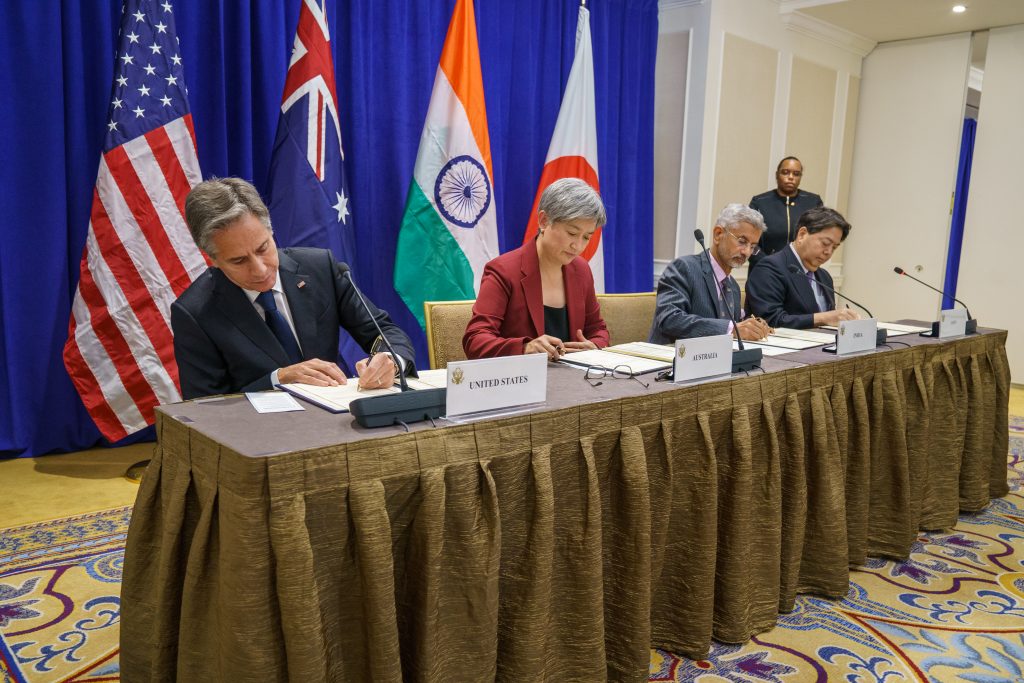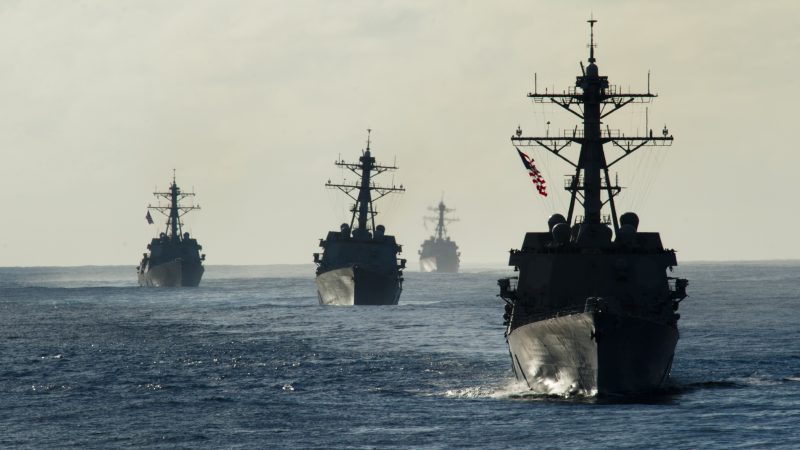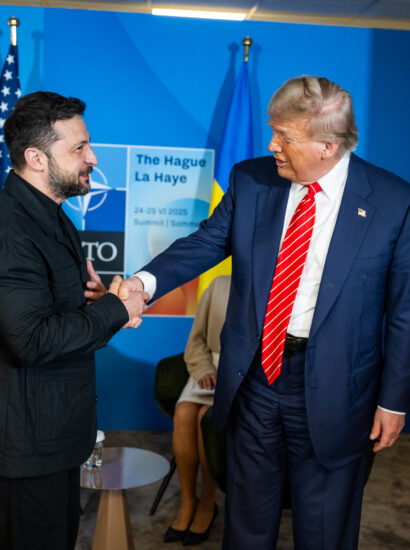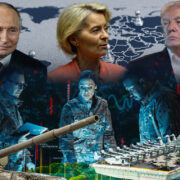The idea of an “Asian NATO” is making waves in politics, capturing attention and raising doubts at the same time. It envisions a collective defence approach similar to the well-known North Atlantic Treaty Organization (NATO). Although this isn’t a new thought – it was proposed after World War II for East Asia – it didn’t work out back then. Now, with many complex problems and changes in power happening in the region, a big question comes up: Should there be a US–led defense group in the Indo–Pacific?
The Indo–Pacific: Trade Bloc, Geographical Region or US Geopolitical Construction?
The Indo–Pacific is a realm of superlatives. Commentators and analysts often emphasize the region’s significance by referring to its enormous population, rapid GDP growth, record–high consumption, and other groundbreaking figures. However, data often fluctuates. For instance, the region’s share of global trade oscillates between 50 percent to 70 percent in media and government reports, and its population varies between 50 percent to 65 percent of the world population – a difference of over 1 billion people. The inconsistency arises due to the lack of consensus on what the term “Indo–Pacific” covers. Where does the region begin geographically, and where does it end? Is it an extension of the Asia–Pacific region, or an entirely distinct entity? Does China fall within the scope of the Indo–Pacific, or is the entire concept centered around countering the ascendant dragon?
To gain a better understanding of the region’s dynamics, it is crucial to consider Peter Katzenstein’s theory of regions.
According to Katzenstein, regions possess both material and symbolic dimensions; they are politically constructed, reflecting the influence and intentions of states. As a result, behavioral interdependence and political interactions can be observed within regions, as well as between regions and major powers.
In his book “The World of Regions”, Katzenstein delves into the relationship between the United States and various regions. He characterizes the US as an “imperium”, encompassing both formal, and informal systems of governance, and a blend of hierarchical and egalitarian political principles.
Katzenstein’s concept explains the main trends in the Indo–Pacific. First and foremost, the Indo–Pacific region is about the expansion of the American Imperium. As a result, the region, using Katzenstein’s categories, reinforces the territorial and non–territorial power of the United States.
According to a recently released report by the Congressional Research Service, the US has negotiated access to 12 new defense sites in the Philippines and Australia, constructed new installations in Japan and Guam, and expanded facilities at dozens of existing installations across the region since 2011, spending over 8.9 billion USD for new military construction projects at Indo–Pacific sites. The bases being constructed in the Philippines, Japan, Australia, and Guam, as well as the increasing American military and technological presence in the region, enhance the territorial power of the United States. In parallel, the Washington–led network of multilateral and bilateral relationships is being established, where Washington’s growing non–territorial power is manifested.

Secretary of Defense Ash Carter speaks with the Philippines’ defense secretary Delfin Lorenzana during an official reception the day before the Association of Southeast Asian Nations (ASEAN) conference begins in Kapolei, Hawaii, Sept. 29, 2016. (DoD photo by U.S. Air Force Tech. Sgt. Brigitte N. Brantley)
An Instrument of Deterrence
China perceives the construction of the Indo–Pacific as an American strategy aimed at containment and isolation. While the region’s economic opportunities have drawn global attention beyond the security dimension, China’s concerns are not unfounded. The Biden administration adopted its Indo–Pacific strategy in 2022, with the idea of curbing China taking precedence. This document introduces the fundamental principle shaping American defense policy, known as the concept of integrated deterrence.
Its essence lies in deterring China, in cooperation with allies, from potential aggressive actions and violations of international rules and norms.
The countries involved react to this process in various ways. From Japan to Australia and even the European Union, many attempt to influence the shaping of the emerging Indo–Pacific, but their approach to countering China differs.
These friendly, so–called “like-minded” nations’ stance against China remains divisive. While certain countries, typically located within the region, support a tougher stance against China’s perceived threats, others, like the European Union, prioritize safeguarding their relations with China and thus avoid adopting a warlike rhetoric. Some countries adopt hedging strategies to extract maximum benefits from the great power competition. India’s case is particularly interesting: while it confronts China’s more assertive foreign policy, it simultaneously seeks to maintain a distance from the United States’ war narrative.
The Genesis of Asian NATO
In this context, the concept of an “Asian NATO” emerges. The grand oxymoron of International Relations is not a new concept; it has been a topic of discussion since the aftermath of World War II.
After NATO was established in 1949, American allies in the region raised the issue of a “Pacific Ocean Pact”. The Republic of Korea and the Philippines advocated for this matter within the US State Department. In July 1949, Philippine President Elpidio Quirino organized a summit with the leader of the Republic of China, Chiang Kai-shek, which endorsed the proposal for the Pacific pact. However, the US rejected the plan and opted to establish bilateral relationships with its regional partners. This marked the creation of the so–called “hub–and–spoke system”, which continues to shape Washington’s regional relations.
The concept of the “Asian NATO” finds its origins elaborated in Victor Cha’s important work, “Powerplay: Origins of the US Alliance System in Asia.”
Cha explains that the US established the hub-and-spokes architecture based on the principle of “power-play”: a framework of extensive US dominance that secured Washington’s position in a hierarchical dynamic. Regional partners, on the other hand recognized that a NATO–like, multilateral organization could grant them a stronger stance to shape US foreign policy.
In his analysis, Cha provides an intricate overview of the challenges faced by the Pacific Ocean Pact:
- Fear of entrapment: Supporters of a NATO–like organization in the region were championed by “rogue allies.” Both Chiang Kai-shek and Syngman Rhee, the initial leader of South Korea, pursued revisionist foreign policies and pressed the US for military backing. The US exercised caution, aiming to avoid becoming embroiled in a conflict with China or North Korea. There was concern that the Pacific Ocean Pact might be exploited for such purposes.
- Asymmetric military capabilities: The military prowess of the US far surpassed that of any coalition of other East Asian countries, making a collective security agreement not significantly advantageous in terms of bolstering US military strength.
- Lack of deterrence power: Multilateralism wouldn’t strengthen deterrence since the US had already showcased its security commitment by deploying American troops to the Korean Peninsula.
- Lack of involvement from other allies: Japan was unwilling to join, and Australia, New Zealand, and Britain opposed the initiative.
Now that the circumstances of the failure if the previous attempt regarding the Asian NATO are known, it’s worth examining how the United States’ relations in the region have changed.
Entrapment situation is hardly relevant anymore. The countries previously considered rogue allies, namely South Korea and Taiwan, have democratized and become more predictable and reliable. Their revisionist foreign policy goals have significantly eased, and with China’s rise, the regional security and economic landscape has also changed.
The asymmetric military capabilities – the second obstacle in Cha’s work for the formation of a multilateral defense organization – remain; the military power of the United States continues to significantly surpass that of other countries in the region. However, several regional partners have substantially enhanced their military forces, primarily through the acquisition of American military technology. According to the latest SIPRI Yearbook on military spending, Japan has surpassed its military burden for the third consecutive year and is at its highest level since 1960. South Korea has announced a four–year defense program worth $268 billion USD, indicating a 6.8% annual increase by 2027. Australia’s defense funding for 2023–24 has exceeded $50 billion for the first time in history, encompassing the widely debated nuclear–powered submarine procurement program. India has become the world’s number one arms importer, purchasing 11% of arms sold globally. This South Asian middle power possesses 164 nuclear warheads and seems to be expanding its nuclear weapon inventory.
The Indo-Pacific and Asian NATO: Will It Blend?
Whether a US–led multilateral military cooperation in the Indo–Pacific would deter or provoke China remains one of the most significant questions in the region. While the US government adheres to the concept of integrated deterrence, the Biden administration’s Indo–Pacific Strategy lacks a clearly defined modus operandi. The document acknowledges both direct military partnerships and multilateral cooperation, with a focus on the significance of AUKUS. However, multilateral cooperation is briefly mentioned in just one sentence, whereas bilateral ties are given greater emphasis. The strategy highlights the importance of strengthening “treaty alliances with Australia, Japan, the ROK, the Philippines, and Thailand”, and aims to advance the US’ Major Defense Partnership with India. Lastly, the strategy emphasizes the necessity of enhancing defense capabilities in South and Southeast Asia and the Pacific Islands. Based on this textual analysis, the Biden administration appears to place greater reliance on bilateral relationships to achieve deterrence.
The fourth aspect of Victor Cha’s analysis involves the rapid evolution of allies’ attitudes since the 1950s. While Japan, Australia, and New Zealand initially opposed the idea of a NATO–like organization in the region during that era, these nations have since become integral to US engagement in the area. There are two defense–focused multilateral organizations in the region: AUKUS and the Quadrilateral Security Dialogue, or Quad. Established in September 2021, AUKUS represents a trilateral security partnership involving Australia, the United Kingdom, and the United States.
Although its official primary purpose is to enhance defense and security cooperation in various areas, AUKUS is primarily aimed at establishing a unified submarine force.
In Western Australia, the HMAS Stirling naval base anticipates increased visits from UK and US submarines. In early August, Australia officially welcomed the first US Virginia Class next–generation attack submarine to its shores since the announcement of the AUKUS defense agreement in March. AUKUS also encompasses provisions for Australia to acquire nuclear–powered submarines, marking a significant milestone in regional geopolitics.
Formally, the Quad is a strategic forum comprising the United States, Japan, India, and Australia. Initiated in its current configuration in 2017, the Quad’s objective is to foster “regional stability and prosperity in the Indo–Pacific” by means of dialogue and collaboration on diverse subjects, encompassing security, infrastructure advancement, and economic expansion. Among Quad member states, differing opinions arise regarding the future of this cooperation. India exhibits hesitance to intensify collaboration, apprehensive about provoking China or yielding excessive ground to the US. This also implies that the Indo–Pacific may predominantly be influenced by the trio of English–speaking nations and Japan.

United States Secretary of State Antony J. Blinken participates in the Indo-Pacific Quad Meeting with Australian Foreign Minister Penny Wong, Indian Foreign Minister Subrahmanyam Jaishankar, and Japanese Foreign Minister Hayashi Yoshimasa, on the margins of the 77th Session of the United Nations General Assembly High Level Week, in New York City on September 23, 2022. (Photo by Ron Przysucha)
Victor Cha used the “power-play” theory to explain how the US–led hub–and–spokes system works in Asia, which helps us understand the key trends in the Indo–Pacific. When we look back at the obstacles to an “Asian NATO” in the 1950s, we see big changes in the region. There’s a group of democratic countries with similar ideas, they’re spending a lot on defense, and they want the US to be more involved.
However, it’s still unlikely that an “Asian NATO” will happen. The US is more focused on building strong one–on–one relationships, which strengthens the hub–and–spokes system. But we can also see some teamwork happening, like with the Quad and AUKUS. Interestingly, both groups are mostly led by three English–speaking countries: the US, the UK, and Australia.
To sum up, it’s not very likely that there will be a formal defense group like NATO. But there’s a growing pattern of the US leading a defense–focused team. This team is made up of both one–on–one connections and groups like the Quad and AUKUS. This is shaping the Indo–Pacific region, with the US playing a big role.








[…] bring surprises through its diplomacy. With the significant expansion of its East Asian relations, new dynamics are shaping the region, indirectly serving its struggle against the West. To understand Russian […]
[…] cooperation override any concerns. The United States is increasingly mobilizing resources in the Indo-Pacific region, and multilateral partnerships like the Quad and AUKUS are pressuring both China and Russia. These […]
[…] without its allies in Asia, and above all without those in Europe, the U.S would be a much diminished […]
[…] that the South-China Sea belongs to them. What do you think of the two regional alliances, the Quadrilateral Security Dialogue, commonly known as Quad, and the AUKUS? Do they have any deterrence […]
[…] Australia is grappling with a problem where its economy desperately needs immigration, while society is reaching its tolerance threshold for the massive influx of new arrivals. […]